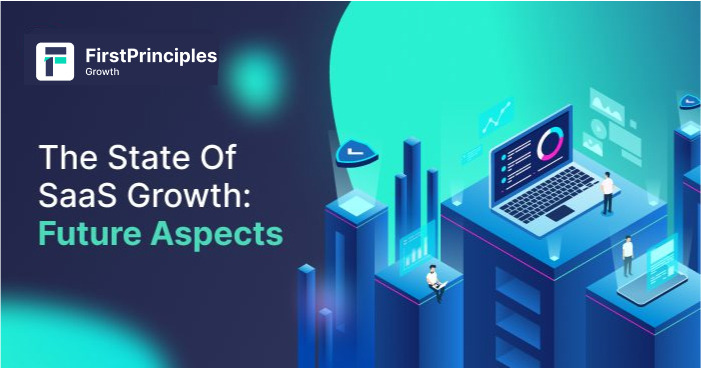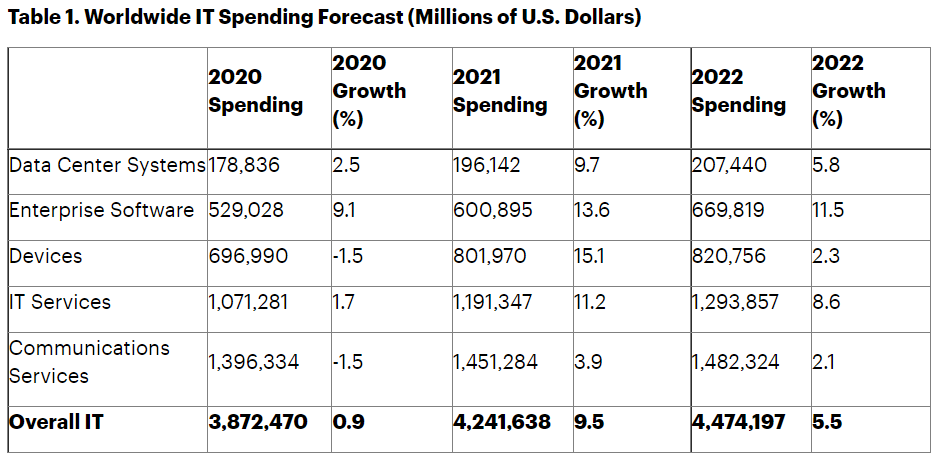
Home > The State of SaaS Growth: Future Aspects
Table of Contents
ToggleThe SaaS industry has seen a boom in recent years owing to the rapid digital transformation and the need for everything accessible on the cloud from anywhere. This was an ongoing change even before 2020 and the post-covid era. However, this phase did accelerate the adaptation of SaaS in companies and investments in this industry. The post covid era and the “new normal” business and workplace gave SaaS industry the momentum it needed.
Another contributing factor to the popularity of SaaS and the new wave of increasing SaaS applications is the accessibility of the internet G’s – 4g, 5g, and so on, and the low entry barriers in multiple markets. Whether it’s a business-level problem that needs to be solved or a solution that individuals can use to ease their day-to-day tasks, eager audiences are to be found everywhere.
Everyone knows what SaaS is and how it operates (most of us have used Zoom, Slack, or Netflix), so we won’t be defining it here. The key topic of this blog is to understand where the industry stands right now and what the future holds for it.

Source: Gartner
The future of SaaS will not slow down. In fact, the 2021 survey of over 350 SaaS companies by entrepreneurs predicted an average SaaS growth rate of +36% last year. As per a report by Gartner, it is anticipated that 50% of organizations will centralize SaaS application management by the year 2026. The new norm of SaaS-powered workplaces has also led to increased competition.
As more companies adopt SaaS solutions, and since no single SaaS delivers all the necessary functionalities required by businesses, there will be scope for both vertical and micro SaaS (vertical-SaaS covers businesses’ need for high-quality software and micro-SaaS serves as add-ons to solve niche problems).
Let’s briefly look at the benefit of SaaS applications:
Pandemic has clearly played a significant role in altering the way we live and work. According to a survey, 92% of people surveyed expect to work from home at least once per week, while 80% expect to work from home at least 3 days per week.
This shift has led people to switch to otherwise unnecessary online platforms for work management and communication and daily essentials, groceries, medicines, etc. The world is bidding adieu to the offline approaches in almost all walks of life and shifting towards online solutions for ordinary to critical tasks. This shift has also seen traces of impact in funding, where the average European SaaS startup raised €1 million at seed in 2020 and shifted to €2.2 million in 2021. As per Accel’s report, the European SaaS market attracted $9-9.5 billion investment in 2020 which tripled to $29-30 billion in 2021 [Source]. According to another report by Finances Online, 57% of European and U.S. companies increased SaaS spending last year, underlining the resilience of the subscription model.
Before the pandemic began, SaaS solutions had started to take over the market due to their flexibility. When clubbed with enhanced security, this was a go-to option for many businesses to run their day-to-day operations. As listed in the section above, SaaS solutions have countless pros and are not restricted to the desperate times of COVID-19. It goes well beyond that.
SaaS, where companies integrate solutions with their own application and sell it to a fully developed platform, a.k.a. white-labeling, is valuable for startups as they no longer need to build solutions from scratch. It’s especially great for startups looking to gain market share quickly and with fewer logistical or financial costs to consider.
B.I. dashboard can be used as a SaaS solution, one that is entirely white-labeled and adjusted to the specific branding needs of a company or department. Additionally, companies that sell white-label platforms get a chance to generate new ROI streams.
Another trend that’s certainly gaining momentum is the low-coding solutions. These out-of-the-box style data centers allow users or developers to lay the foundation of their SaaS with less code to write. This doesn’t mean that it eliminates the need for developers or engineers. However, this gives the technical staff the much-needed time to develop innovative solutions.
On the other hand, no-code SaaS capabilities have encouraged new players to bring innovative solutions. No to low code solutions are readily adopted as they reduce the need for technical background and help improve the internal processes by relieving tech teams from endless supporting tasks. The global low-code platform market revenue is forecasted to reach approximately $65 billion by 2027 as the market is projected to grow with a CAGR of 26.1% over this period.
Machine learning, a subset of A.I. built on an autonomous operational model, is one of the fastest-growing segments of software. Several companies, especially automation software, have started leveraging Machine Learning (ML) to empower their SaaS with automated onboarding and ultra-responsiveness; be it with the help of AI-powered chatbots that have revolutionized customer support or tools analyzing the best time to send out a campaign based on past opens, like Active campaign.
ML-based SaaS models help:
ML innovations have and will continue to empower SaaS-style offerings to automate chunks of monotonous operations and become self-improving, adding a layer of intelligence and operational efficiency.
Out of all the “as-a-service,” SaaS solutions have gained momentum owing to their scalability and flexibility. And with the pandemic, SaaS witnessed a rising demand, especially for apps that helped with project management, people management, team communication, and web conferencing.
Now apps like Zoom, Skype, and M.S. teams are irreplaceable. The pandemic saw a seismic shift from “need to be at the office” to “work from anywhere” this has led to an increase in demand for similar web conferencing solutions ideal for unhampered and smooth communication throughout these challenging times.
Analyzing data and driving conclusions for better business performance is something a lot of companies are investing in. Data Analytics has become a vital component nowadays. In contrast to the hit and trial decisions in the past, businesses are now taking a more pragmatic approach to understanding data and using collected results to get the best results in the future. In fact, experts have predicted that there will be a 23.3% growth in end-user expenditure on analytics-centric SaaS in 2023. SaaS models come with in-built centralized access to data that helps businesses uncover hidden insights like performance dashboards from anywhere in the world.
Martech, a.k.a marketing technology, refers to the tools that help businesses enhance their campaigns by helping them with better insights and improved processes.
After the pandemic, martech is seeing significant changes, especially concerning inflexible subscriptions and product demos.
With the expansion of the SaaS industry and new verticals securing their space in the market, creators are focusing more on enhancing the customer experience, and Martech is no exception. Martech SaaS providers aim to simplify their interfaces, remove redundant features, and make their solutions more accessible. Their focus is now on perfecting one solution alongside helping them gain invaluable insights.
B.I. and Data analytics platforms and graphic design software that requires little or no technical knowledge are prime examples in the martech sector. As of now, this is one of the exciting things that is happening now, and we will continue to see horizon shifts in the future.
According to a report by Accel, the investment into private SaaS startups was three times higher than funds raised publicly. In contrast, the growth in private cloud funding outstripped the increase in U.S. private cloud investment (2.4x). These are just some stats that point to the fact that the future of SaaS will not slow down.
The high demand for SaaS is a good thing as innovation is the need of the hour, as can be understood by Betterbuys report that reveals “expenditure in the U.S. SaaS Industry is likely to reach $55 billion by 2026.” The next-generation cloud software brings simplicity and solution to the chaos, mainly looking at platforms that would help businesses control all their cloud software in one place, including analytics, and require almost no time to set up. The future of SaaS is now entirely data-driven. As all business forms utilize SaaS in some form, it’s an ideal option to switch towards not just building SaaS applications for existing businesses but by being a part of this growing market either by investment or by becoming a SaaS founder.
At Firstprinciples, being a part of the SaaS industry and helping several SaaS companies from the ground up, we have first-hand witnessed the rapid growth within the SaaS industry. We’re a team of SaaS experts who help B2B SaaS companies at each stage of their journey. We start, acquire, and advise B2B SaaS Companies to help them scale and be the Slack of tomorrow with new groundbreaking results and valuations that will be covered in our future success stories in a few years. Now is your time to level up!
Ameet Mehta‘s expertise lies in building revenue engines for technology-enabled companies and private equity investments. He began his journey with TechStars Chicago and has since founded and acquired several companies through FirstPrinciples Holding Company. The FirstPrinciples portfolio generates over $7M in revenue/year with most companies in the SaaS space. He...